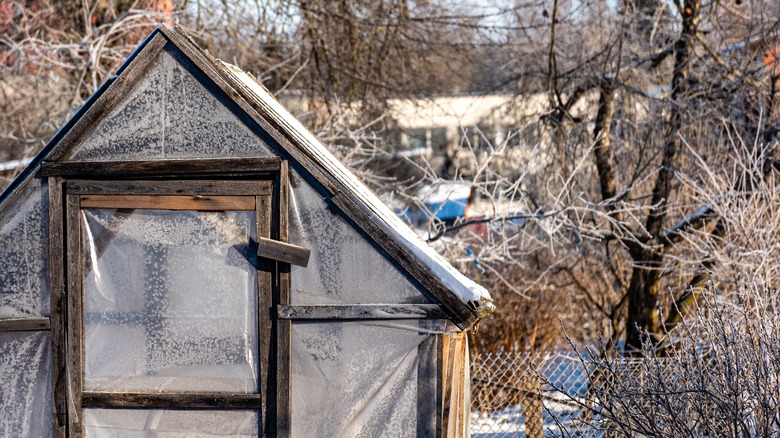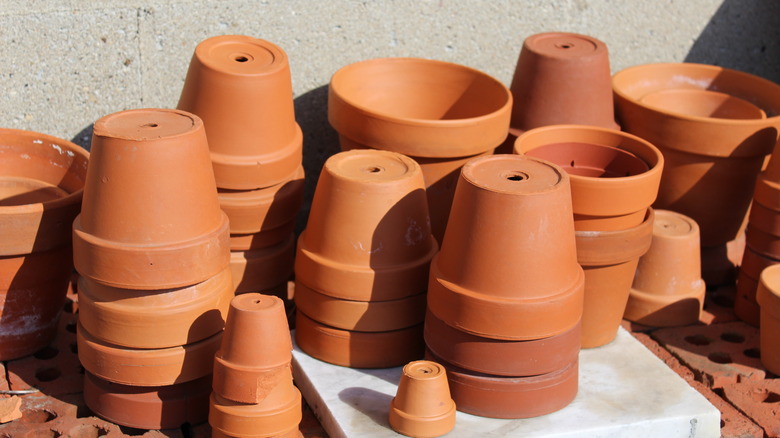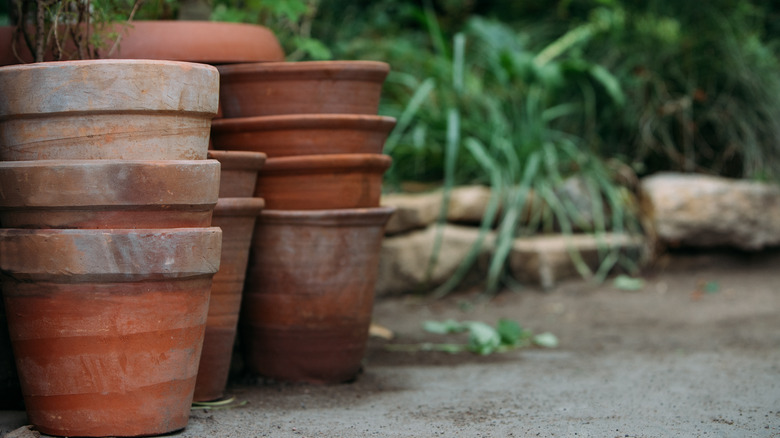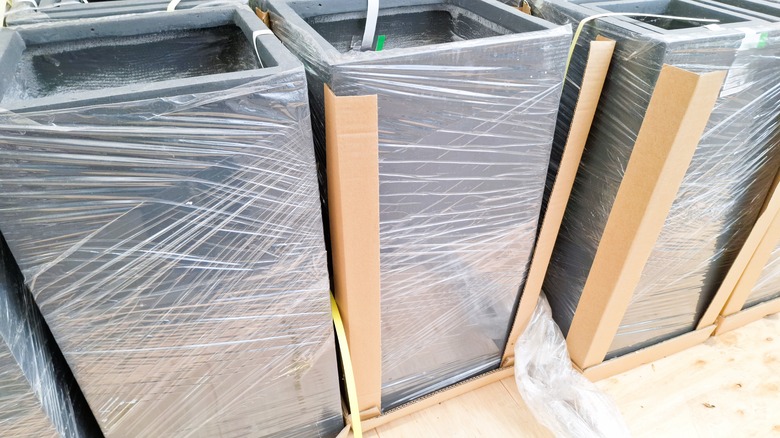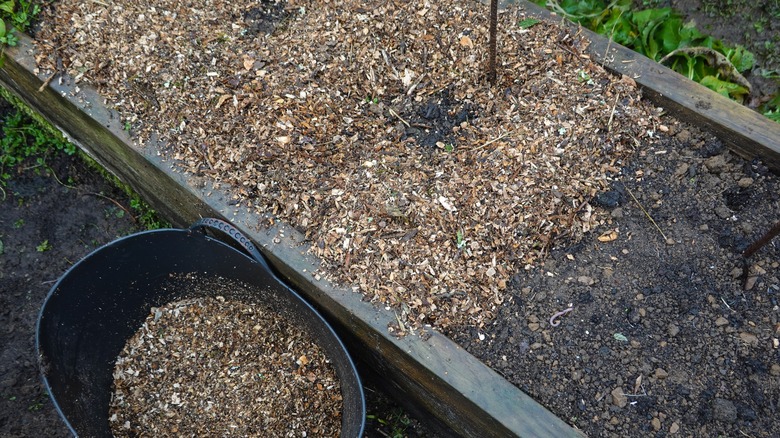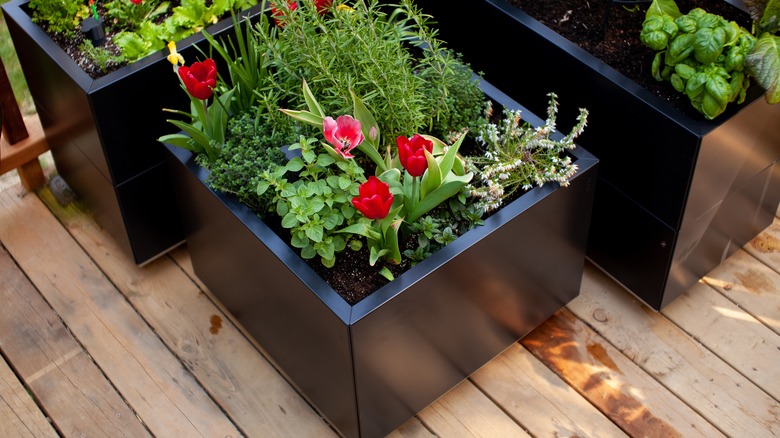7 Tips & Tricks That Prevent Planters From Freezing During The Winter
As fall draws to an end, you may be wondering what needs to be done to get your yard winter-ready. At a glance, this winterization to-do list focuses on preparing your plants and lawn for months of cold weather, as well as anticipating any harsh conditions that winter may bring, such as snow or ice. However, your plants aren't the only part of your garden that can use a helping hand to survive the winter. You might also want to prepare your planters for the winter. This can be done in a variety of ways, ranging from bringing them in from the cold to wrapping them in plastic.
If you love terracotta and other porous-material planters, then preparing for the winter isn't just about keeping your plants in good shape: it's also about preventing your planters from cracking. This is because porous materials can soak up surrounding moisture, which then expands as the temperatures drop and the water freezes. This can result in cracks. While there are plenty of ways to upcycle a broken planter in your garden, you likely want to prevent damage whenever possible. This means taking the steps to prepare your planters for winter and prevent cracking. If this sounds intimidating, don't worry — it's easy.
Bring your planters inside
One of the best ways to keep your pots safe throughout the winter is to bring them indoors. This doesn't have to be inside your home, necessarily — just somewhere covered and protected from the elements with somewhat regulated temperatures. You can bring them into a greenhouse or your garage if possible. Unfortunately, moving all your planters inside may not be feasible, especially if you're a fan of large, eye-catching plants that require equally large and heavy planters. Investing in a rolling cart is one way to transport your larger planters.
Tip your pots upside down or onto their sides
There are two primary approaches to winter preparation for planters. First, you can keep your plants in their respective pots. Or, you can transplant them and instead focus on storing the empty planters. Brittle planters crack when they collect water and freeze. To reduce the likelihood of this happening, you'll want to remove any moisture that's inside them. One way to do this is by leaving them either upside down or on their sides to drain. Just make sure to secure your planters so they don't roll and break with heavy winds.
Avoid stacking pots improperly
If you have a large number of empty planters outside, it can be tempting to stack them and leave them in a greenhouse or shed until warmer days return. However, it's essential to know the correct way to store planters when they're not in use, especially during the winter. Some pots are at risk of breaking if stacked incorrectly, so make sure to stack just a few at a time and use plenty of cushioning between them.
Wrap planters in plastic
Keeping your planters safe during the colder months can involve protecting them from frigid temperatures. Wrapping them in plastic is one way to do this. After all, plastic can help protect plants from colder temperatures, so why not your planters too? While this can help insulate them, it must be done correctly. Otherwise, trapped moisture can lead to the breaks you are trying to prevent. This means keeping them dry and sheltered so that any precipitation can't get caught underneath the plastic wrap and soak into your planters.
Insulate with mulch
You can also insulate your planters with mulch to help avoid cracks during the winter. This option works exceptionally well with smaller planters, such as those used for succulents or small flowers. You can place each planter side by side in a large container. Then, fill in the extra space with mulch to help keep moisture at bay while still providing the much-needed insulation for the cold weather.
Provide wind cover
If you're looking for an alternative to common hacks to protect planters from freezing in winter, like wrapping them in gutter tape, pay attention to your storage location. Not all outdoor locations are equally equipped to protect your planters. Aim for a location that's sheltered from harsh winter winds, which could tip over lightweight pots and lead to shattering.
Choose weather-resistant planters
Sometimes, the best way to prevent planters from freezing during the winter is to choose ones made from a weather-hardy material. Some examples of planter materials that may be better suited for extreme weather conditions include fiberglass and metal, which offer additional benefits, such as sturdiness and ease of maintenance, that make them perfect for year-round use.

